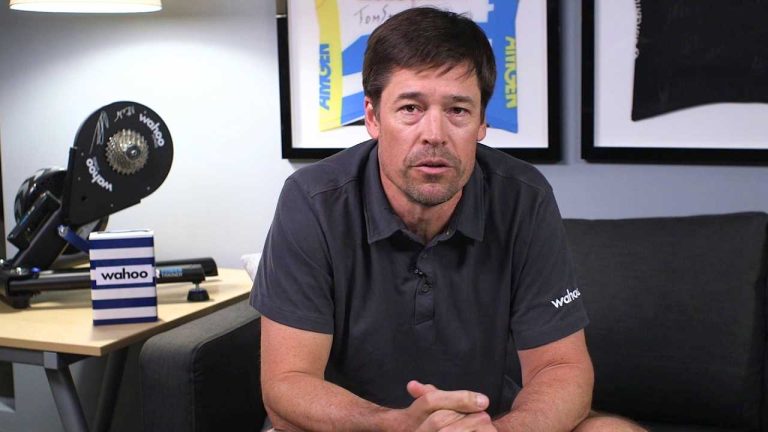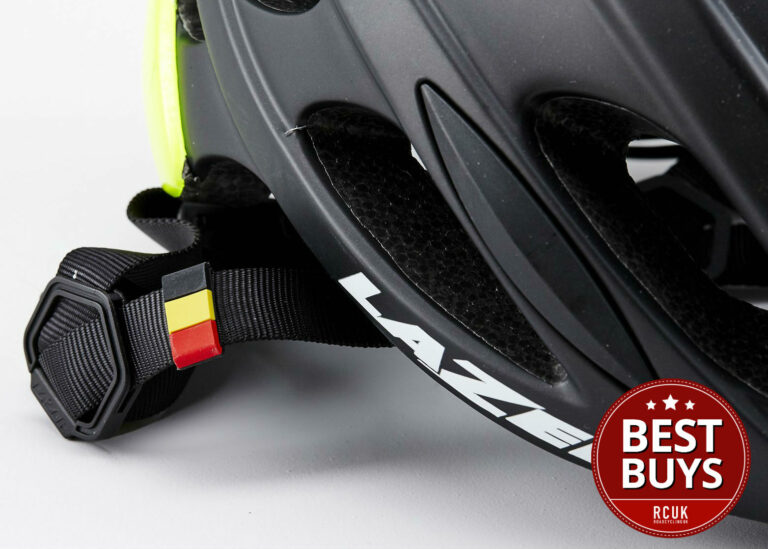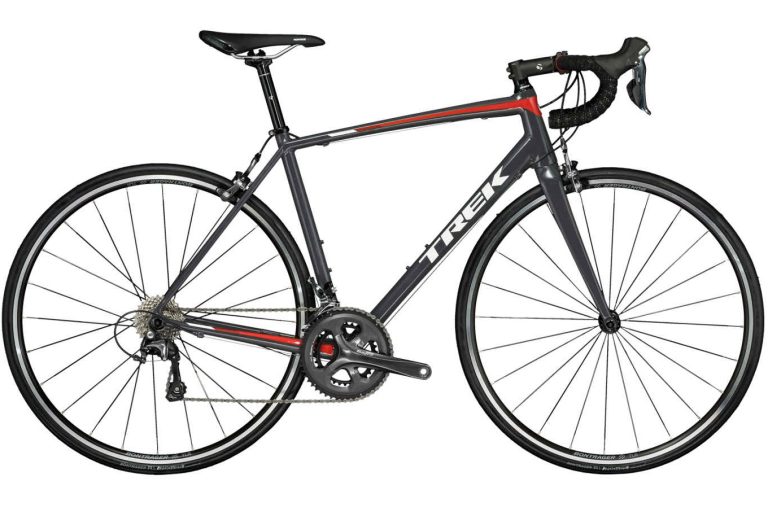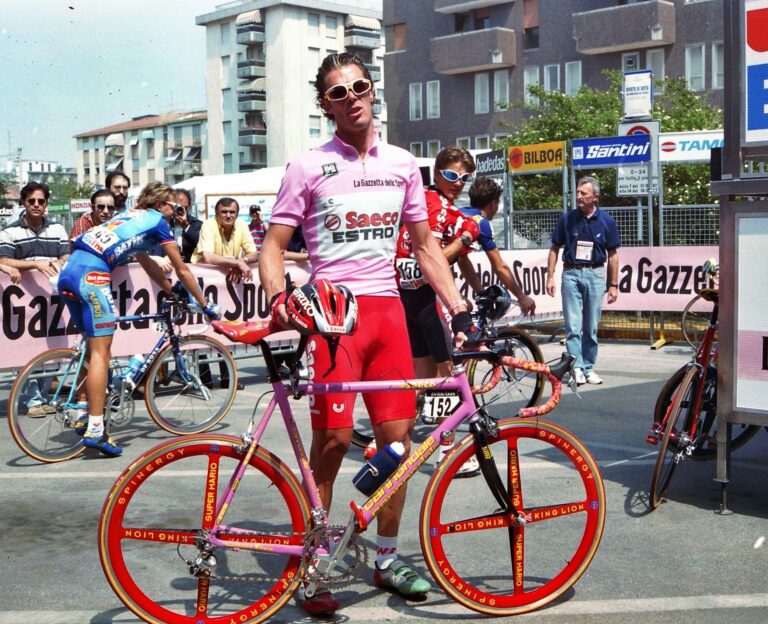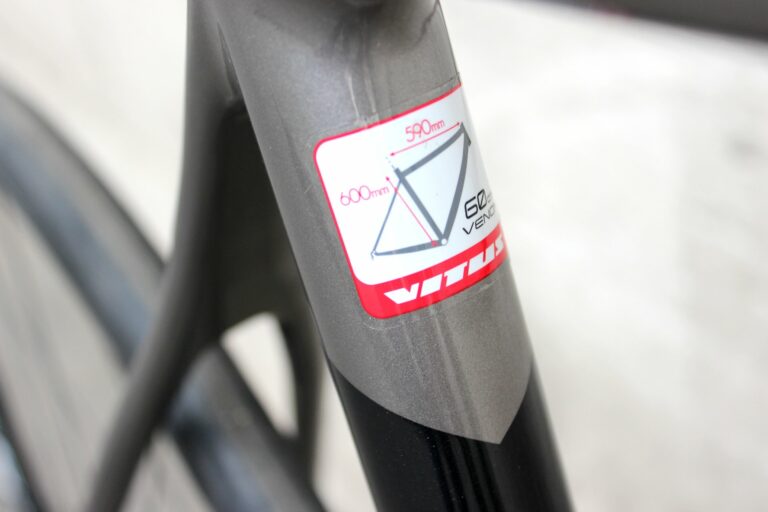London’s vast ExCeL Centre is playing host to two major cycling events. Most of those attending one are unaware that the other is even taking place. But the relationship between a small group of experts sequestered in an anonymous conference room high above the exhibition hall and the thousands of show visitors below is made manifest by a cluster of stands that dominates the centre of the exhibition space; stands that are not laden with shiny product, but with jigs, cameras, sensors, and measuring tools.
It is bike fitting that unites the London Bike Show and the International Cyclefit Symposium, and the two men responsible have made the journey across the city to Docklands from their shop in Covent Garden to facilitate, discuss, exhibit, and spread the word of a branch of cycling science that has moved with gathering pace from the margins to the mainstream, largely due to their efforts, and those of a handful of fellow pioneers. Phil Cavell and Julian Wall of Cyclefit, once “jobbing first cats” have seen a mission to heal themselves of the injuries of cycle racing expand to a successful business where they are now called upon by Trek Factory Racing to offer bike fitting advice to the likes of Fabian Cancellara and Jens Voigt.

Perhaps symbolically, the Cyclefit stand is at the centre of those exhibiting bike fitting services at the London Bike Show, with some of the industry’s biggest players – Cannondale, Shimano, and Specialized – mere adjuncts. Appearances can be deceptive, however, and while the volume of space occupied by the Cyclefit stand is appropriate to Cavell and Wall’s status in the field of bike fitting, it is not an accurate representation of their modus operandi. To gain a proper appreciation of Cyclefit’s specialism and attention to detail, it is necessary to visit the shop.
A stone’s throw from what must be one of the most expensive areas of retail estate in the world, home to Apple, Oakley, and Paul Smith among others, lies the Covent Garden home of Cyclefit. It is in the nature of London that behind a few corners lies a different world, and just a few streets away from the numbers clogging the entrance to Covent Garden tube station lies Macklin Street. Beneath a small, square sign and a glass panel etched with the image of a racing bike lies the semi-smoked glass doors that lead to one of the most highly respected fitting centres in the world.
The Macklin Street shop represents the latest destination for Cavell and Wall on a journey begun in the mid 1990s with an attempt to overcome their racing injuries (a knee complaint for Cavell; a back injury for Wall). Hungry for knowledge, but working alone in a field at that point barely recognised, the pair pursued a process of “trial and error” to try and resolve their own complaints. “What we wanted to try and do was to get rid of that trial and error and replace it with a protocol that’s empirically verifiable, sensible, and to try and interface people better with bikes as a process,” Cavell explains. The success with which they have developed effective protocols can be judged not only by their WorldTour clientele, but also by their standing in an area of expertise that draws medical professionals as well as cyclists.

Ethos and epiphanies
Of greater importance even than the protocols developed and updated by the pair is the underlying ethos of Cyclefit, one founded in the belief that the position a rider adopts on a bike is a consequence of every aspect of his physical existence. Characteristics such as limb length, once regarded as the only worthy of consideration, are now more accurately recognised only as pieces in a more complicated jigsaw; a theory that Cavell and Wall tested by performing bike fits for identical twins. The resulting positions – radically different – gave the lie to the misguided belief that an effective fit could be arrived at purely from a physical evaluation of the rider.
Cavell describes their experiment as an “epiphany”; one that freed them from an orthodoxy that had prevailed until the late 1990s that measuring bone lengths and inputting the data into algorithm would generate a comfortable and effective position. “They came out with completely different positions, and quiet rightly,” he recalls of his “thought experiment” with the twins. “That comes from the central ethos that being genetically identical is no great predictor of cycling position.”
Fitting Spartacus
While the symposium provides a telling indication of the esteem in which Cyclefit is held by its peers, there is little doubt surrounding the identity of Cavell and Wall’s most illustrious clients. A relationship begun with Trek some five years ago, when the American brand asked the pair to help them create a training manual and to structure a training course for its new fitting system, has culminated in their work with the Trek Factory Racing team. Framed photographs of Wall advising Fabian Cancellara and Cavell at the same fitting camp in conversation with Jens Voigt decorate Cyclefit’s HQ. Such assignments, one imagines, are not taken lightly. Put simply, what is their left to tell the likes of Spartacus about cycling?
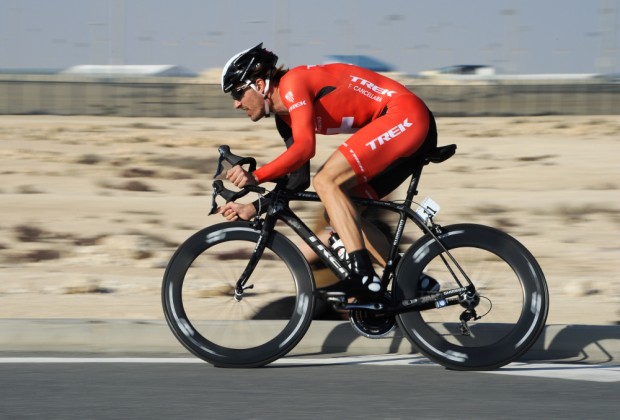
The fitting protocol, Cavell explains, is the same for a professional cyclist as for a member of the public. The difference lies in the manner in which the advice is delivered, one he describes as “quieter”. The stakes are higher. The professional cyclist by definition is to some degree placing his livelihood in the hands of the fitter. “We were there to help them,” Cavell explains. “We weren’t being dictatorial. We’d recommend things if they asked us.
“They didn’t feel that they were being pushed into anything, or rushed into anything; we were a sounding board. They could say, ‘I feel this, and sometimes when I climb I feel that’ and we wouldn’t pretend to know the answers if we didn’t. But if we did think we had a solution – ‘Have you thought about this?’ – then we could workshop that, video it, and use tools to measure it, and they could see the result.
“They’ve come to you with a problem, you’ve come up with a solution and proved that with empirical data that’s verifiable. They are then very confident that the problem has been closed off.”
A second similarity between Cyclefit’s service for the world’s best riders and the amateur cyclists who come through their door in London is their use of technology solely as tools to resolve an issue. While for some fitting companies, the jig or the motion capture system are synonymous with the service, for Cyclefit they are merely a means to an end. Trek Factory Racing, unsurprisingly, placed every tool at Cavell and Wall’s disposal, but the ‘athlete-centered’ approach practiced at their Macklin Street premises meant that only those of use in resolving a specific issue were deployed.

The pair are used to working with the latest technology (we are shown the Gebiomized pressure mapping saddle cover and footbeds and the instant and incontrovertible evidence they provide of seating and foot control issues) but much as a physiotherapist can identify postural issues simply by noticing how a person is stood, so it is the practiced eye of Cavell and Wall, and colleagues Morgan Lloyd, James Hewitt, and Jimmy Wilson, that has placed Cyclefit’s telephone number in the diary of Trek Factory Racing.
The pro cyclist satisfied with his position, able to train and race injury-free, is likely to adopt a policy of ‘ain’t broke, don’t fix it’, Wall says. The rider’s only goal for the new bike that inevitably accompanies a change of team will be to set it up in exactly the same manner as his previous machine. The same applies with a change to a team’s pedal supplier, or the acquisition of a new shoe sponsor. The window in which the rider can complete the necessary process of adaptation, however, is small.
“If a rider is training and he’s ok and everything’s working, he doesn’t really want to change anything,” Wall explains. “They know how they feel on a bike, they know what works and they want to stay that way. With the technology, you have to have a dialogue and suggest that things could maybe improve, and by making small changes you can make a difference. So that niggle they’ve been putting up with for three years, maybe you can take away. Maybe they don’t have to take time off in the season because of injury. It’s a trust thing.”
A matter of philosophy
Ben Serotta may have been the duo’s first mentor, but he is far from their only influence. Cyclefit, and indeed cycle fitting, even at its leading edge, is a world in which ideas are exchanged freely; a collaborative environment perhaps typified by the ICS, where delegates are, to use Cavell’s elegant phrase, “simultaneously student and teacher”. Paul Swift, whose contribution the field includes the invention of the cleat wedge, and who has worked closely with three-time Tour de France winner and double world champion, Greg LeMond, is another who has helped to shape the Cyclefit philosophy.

Cavell uses phrases like ‘brain trust’ and ‘family’ to describe the extended network of fit specialists and medical experts that he and Wall has developed: men like Dr David Hulse, formerly Team Sky’s lead doctor, ‘forensic osteopath’, Alex Fugallo, and Graham Anderson, clinical director at the Balance physiotherapy clinic in Clapham. “We had the bike piece, and the bike racing history and the injuries that go with that, and the interest and the bike training from Ben and Paul,” Cavell says, “but we needed to make great relationships with medical professionals and we did that very, very early. Those people are still part of our family.”
Cavell describes the phrase ‘you don’t know what you don’t know’ as Cyclefit’s mantra. “We don’t pretend to know everything, or own everything, but we try to connect ourselves with people who do,” he explains. “If we don’t, it’s not that we close the problem off, we think about who is the best person to take that problem forward with us.” The pair developed their network of experts intentionally, and from necessity: as pioneers in the field of bike fitting in the UK, those working in the same field to whom they could turn for advice were often on the other side of the Atlantic.
Bike fit: from the margins to MAMILS
Beyond the four walls of the ICS, evidence for the work of Cavell and Wall and their fellow practitioners can be found in the main exhibition space and the visitors who in increasing numbers are embracing bike fit as a sensible and necessary part of the purchasing process. The enormous growth in cycling’s popularity among riders no longer in the first flush of youth has perhaps fuelled interest in a proper assessment of bike position.
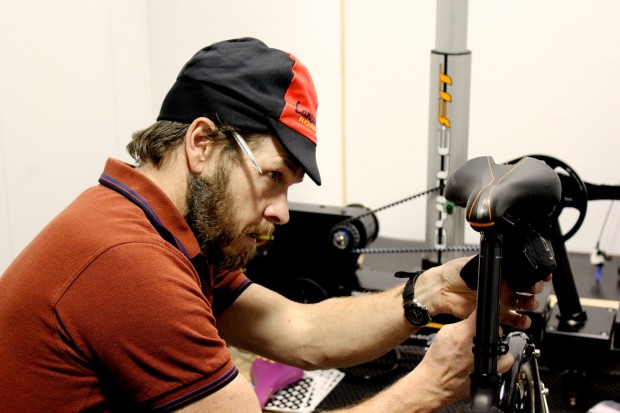
The industry’s biggest players have responded by buying up fitting services and rolling them out to a network of shops. It is its latest response to a changing demographic most frequently characterised as MAMILS (middle-aged men in lycra) that has already spawned the ‘sportive bike’. The upright position synonymous with the amateur cyclist is not necessarily synonymous with comfort, Wall argues. “In general, comfort bikes and the new wave of sportive bikes assume that everyone has poor flexibility, poor core, and a very limited range of motion in their back, so they stick them up in the air and hope they’re going to perform,” he continues. “But from what we’ve learned in the last couple of years, you need to work on both – the bike and the body – to achieve what you want to do, depending on how far you want to take it.”
Wall does not dismiss the concept of the ‘sportive bike’, however; also known variously as a performance or endurance bike, and typically equipped with a tall headtube, short top-tube, and long wheelbase. Serotta was the first to make frames in this style with his Fierte range, Wall explains, which offered 16 sizes. Bikes of this style will naturally be more appropriate for some riders, he continues, and believes the idea that the classic ‘racing bike’ can be configured to deliver the same fit is flawed. “You don’t want to have a bike set-up at the end of its ranges,” he says simply.
Core services
Evidence for Wall’s assertion that an effective fit requires work on both the bike and the body can be found among his WorldTour clientele. The principal of developing muscle groups used by the body to maintain posture is intrinsic to Cyclefit’s holistic approach to the bio-mechanical challenge of integrating man and machine. Wall offers an intriguing parallel. “If you weren’t on the bicycle and you were squatting a weight in the gym, you would have to have good posture, and it’s the same on the bike,” he explains. “Unfortunately, when you sit down on a bike you switch everything off. It’s not a natural thing to sit down and generate power.” He offers another analogy, this time sitting in a chair, rather than collapsing into it, and being asked to maintain the same posture for six hours. Such an endeavour would be “very, very hard,” he says, and would require the training of certain muscles.
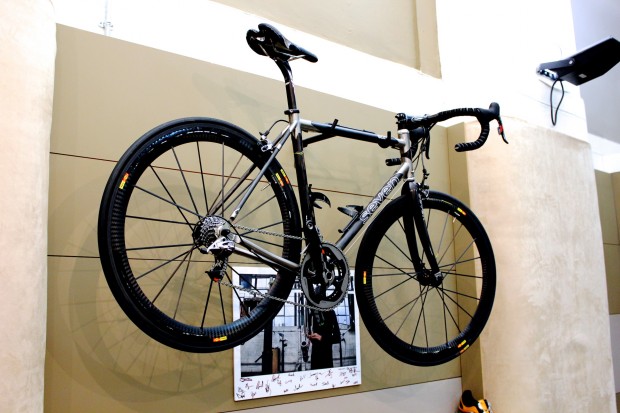
Cycling presents the body with a strange, bio-mechanical proposition, Cavell continues. The emphasis on core training to resolve the puzzle is one professional teams have become “obsessed with”, he says. “They’re looking very literally at that connection between functional strength and position. They know there’s a binary relationship. The more flexible they are, the stronger they are through their functional core, the better they’re going to perform on a bike.”
Symposia, neutral space, and the bike fitting future
And so we return to the ICS, which this year featured talks from some of the leading thinkers in the field, including Dr Andy Pruitt and Keith Bontrager. The first edition was held closer to Cyclefit HQ at the Design Council, but its closure forced a move further afield. Cavell describes the symposium as “a neutral learning space”; one inhabited by a “very, very informed audience” and host to robust discussions where the line between speaker and delegate soon becomes blurred. “Jules and I don’t speak,” Cavell explains. “We don’t contribute in that sense. Our role is to set the ground rules, the code. We contribute by facilitating the space, in terms of ethos and literal space. And we hope that keeps going.”
The growth of the online cycle market, and cycling’s growth among a demographic for whom fit will be a major consideration, as well as the ceaseless quest among the world’s best riders for an advantage over their rivals are all likely to continue to drive the development and acceptance of bike fitting services. Men like Cavell and Wall, pioneers in the field and now credited with occupying a position at its leading edge, are likely to continue that drive.

